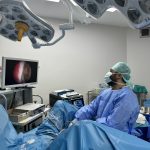
Prostate Surgery
1 August 2025
Diabetes and Erectile Dysfunction in Men
2 September 2025Stem cell therapy represents one of the innovative regenerative approaches employed in the management of erectile dysfunction.
What is Stem Cell Therapy?
Stem cell therapy is one of the most exciting developments in modern medicine. While it is frequently applied in dermocosmetic fields such as skin rejuvenation and hair loss, it has also shown promising results in the treatment of joint, cartilage, and tendon degeneration, as well as retinal degeneration. It is regarded as a groundbreaking therapeutic approach with broad potential applications.
In urology, its most common use is in the treatment of erectile dysfunction. Stem cells are unique cells with the remarkable capacity to differentiate into various cell types and repair damaged tissues. Their most important properties are their ability to self-renew and transform into specialized cells. In essence, they serve as the body’s natural repair and regeneration system.
How Do Stem Cells Work in Erectile Dysfunction?
At this point, it is not difficult to understand how stem cells may help in the treatment of erectile dysfunction. The condition involves vascular, neural, and smooth muscle degeneration within the penile tissue. By injecting stem cells directly into the penis, we aim to restore and regenerate these impaired structures, thereby significantly contributing to functional recovery.
Stem cells help revive damaged blood vessels and nerves, support tissue repair, and stimulate the formation of new blood vessels. Through these mechanisms, the natural erectile function is expected to improve. Clinical studies have demonstrated that stem cell therapy can provide recovery rates of up to 80% in patients with erectile dysfunction.
In practice, we frequently obtain these stem cells from sources rich in regenerative potential, such as bone marrow and adipose (fat) tissue. Among these, adipose tissue is most commonly used, as it is abundant in stem cells and can be easily harvested from the patient’s abdominal area through a simple liposuction procedure performed under local anesthesia. The procedure is relatively quick and minimally invasive.
